Xiaomi (Summary): "Domestic Brand Mentor" Launches YU7, Posing a Threat to "Foreign Monk" Model Y?
![]() 05/26 2025
05/26 2025
![]() 698
698
At Xiaomi's pre-first-quarter earnings release conference, the market was particularly focused on two highlights: Xiaomi's SUV model YU7 and its self-developed chip Xuanjie O1.
1) Xiaomi Automobile YU7 (Core Focus): Xiaomi's overall market value could surpass the trillion yuan mark, largely driven by the remarkable performance of Xiaomi Automobile. Currently, Xiaomi SU7's monthly sales have approached 30,000 units. Following the success of its coupé models, the market is now eagerly anticipating the SUV model, YU7.
In the current domestic market for 25-35w mid-to-high-end pure electric SUVs, Tesla essentially dominates. In April 2025, Tesla Model Y's monthly sales were nearly 20,000 units, while other domestic competitors sold less than 7,000 units. Xiaomi aims to compete with Tesla, with YU7 as the representative of domestic brands. Therefore, during the conference, Xiaomi Group identified Model Y as its primary competitor.
Comparing Xiaomi YU7's currently announced parameters with domestic 25-35w pure electric SUV competitors: ① Xiaomi YU7's battery capacity and range have significantly improved, with even the standard version reaching 93.6kWh, surpassing all competitors; ② Xiaomi YU7's auxiliary driving chip will adopt NVIDIA's Thor chip, offering 700TOPS of computing power, exceeding domestic competitors and approaching Tesla's new Model Y; ③ Xiaomi YU7 will come equipped with a panoramic display P-HUD and LiDAR across all trim levels, both of which are unavailable on Model Y.

From the above parameter comparison, Xiaomi YU7's overall configuration surpasses Tesla Model Y. The specific price of Xiaomi YU7 has not been disclosed yet. If the final price is lower than or similar to Model Y's, it will make YU7 highly competitive in the market.
Regarding market concerns about production capacity, Xiaomi SU7 is currently produced in Phase I factories, which are operating at full capacity. Xiaomi YU7 will primarily be manufactured in the second phase factory in Yizhuang, Beijing. Before the second phase goes into production, some production lines from the first phase factory will be used for trial production and small-batch deliveries of YU7, adhering to the company's timeline for an official July launch. If YU7 also performs well, with the second phase factory's production capacity ramping up, Dolphin believes that YU7's monthly production capacity could reach around 20,000 units by the end of 2025.
2) Xuanjie Chip O1 (Important Focus): This is Xiaomi's first self-developed 3nm flagship chip. Core components such as SoC, CPU, GPU, NPU, and ISP are all designed by Xiaomi, while the external 5G baseband chip uses MediaTek's technology.
Comparing the main flagship chips of the Android system: ① Area: Xiaomi Xuanjie O1 (109mm²) < Qualcomm Snapdragon 8 Elite (124mm²) < MediaTek Dimensity 9400 (126mm²); ② CPU performance: MediaTek Dimensity 9400 < Xiaomi Xuanjie O1 < Qualcomm Snapdragon 8 Elite; ③ GPU performance: Xiaomi Xuanjie O1 < Qualcomm Snapdragon 8 Elite < MediaTek Dimensity 9400.
Xiaomi Xuanjie O1's smaller chip area is primarily due to the use of an external baseband chip. In terms of performance, Xiaomi's newly released Xuanjie O1 is still inferior to Qualcomm Snapdragon 8 Elite but is overall relatively close to MediaTek's Dimensity 9400. Previously, major models equipped with Dimensity 9400 include VIVO X200 and OPPO Find X8, primarily priced in the 4000-6000 yuan range. This time, Xiaomi announced that the Xiaomi 15S Pro, equipped with Xuanjie O1, is priced at 5499-5999 yuan, also targeting the mid-to-high-end mobile phone market.
The fact that both Xiaomi 15S Pro and Pad 7 Ultra are equipped with Xiaomi's self-developed and designed Xuanjie O1 chip, and Xiaomi s4 Pro features the Xuanjie T1 baseband chip, demonstrates the company's confidence in the Xuanjie chip. The advancement of self-developed chips enhances Xiaomi's product strength on the hardware side and is also expected to reduce raw material costs in the medium to long term. However, it cannot be ignored that the current Dimensity 9400, with similar overall performance, is an 8-core solution, while Xiaomi Xuanjie O1 adopts a 10-core CPU and 16MB L3 stacking, and the cost of this chip is currently not low.
Regarding chip research and development: As of the end of April this year, Xiaomi's cumulative R&D investment in chip projects has exceeded 13.5 billion yuan, and the current number of R&D team members has surpassed 2,500. The company's annual R&D investment this year is expected to exceed 6 billion yuan. Xiaomi plans to continue investing in the long term, committing to at least ten years of investment totaling at least 50 billion yuan.
3) Investment Perspective: Xiaomi's current market value is nearly 1.3 trillion yuan, comprising two main parts: traditional businesses and automotive businesses. Due to the still high cost of Xuanjie O1, it is assumed to currently have little impact on Xiaomi's hardware costs. Combining the 20-25 times PE expectations for traditional businesses (corresponding to the core operating profit after tax of traditional businesses in 2025), Xiaomi's traditional business segment corresponds to a market value of approximately 800 billion to 1 trillion yuan, while the remaining automotive business segment corresponds to a market value of approximately 300 billion to 500 billion yuan.
Although the company's automotive business is expected to generate nearly 100 billion yuan in revenue in 2025, this is mainly limited by insufficient production capacity and does not reflect market demand, hence it cannot directly refer to the steady-state PS of peers in the market. With the traditional business remaining relatively stable, the automotive business will be the main source of the company's growth potential.
Previously affected by safety incidents related to SU7, the company's share price once fell below 40 Hong Kong dollars but has now rebounded above 50 Hong Kong dollars. If the newly released YU7 can outperform Tesla's Model Y in the local market, even if there will still be capacity bottlenecks, the market's expectations for the company will continue to rise.
Attachment: Summary Information
I. Core Information
At this conference, Xiaomi announced the completion of the strategic closed loop for the "Car and Home Ecosystem," launched its first self-developed 3nm flagship chip Xuanjie O1, and released Xiaomi 15S Pro (starting at 5499 yuan, featuring full-focal-length Leica imaging + 6100mAh battery), Pad 7 Ultra (14-inch 3.2K OLED screen + 120W fast charging, starting at 5699 yuan), and Xiaomi Watch s4 Pro (starting at 1299 yuan), all equipped with this chip. Simultaneously, the luxury SUV Xiaomi YU7 was unveiled, featuring an 800V silicon carbide platform, achieving a 0-100km/h acceleration in 3.23 seconds, and overall targeting Model Y. The home appliance series was upgraded with products such as human-sensing intelligent air conditioners (starting at 3999 yuan) and dual-system refrigerators (3999 yuan). Xiaomi also announced that it will invest an additional 200 billion yuan in R&D over the next five years to strengthen chip, AI, and intelligent driving technologies, consolidating its position as a leading global ecological technology company.
II. Product Launch
Xiaomi's mobile phones have been ranked third globally for 19 consecutive quarters. Xiaomi's automobile and Xuanjie chip smart factories have completed the leap from 0 to 1, officially closing the loop of the Car and Home Ecosystem strategy, making Xiaomi the technology company with the most complete ecosystem.
Continuous growth in R&D investment: In the past five years, Xiaomi has invested approximately 102 billion yuan in core technology research and development. The financial report released at the beginning of the year showed a year-on-year increase of 35%, and this year's growth rate is expected to exceed 30%. For the next five years, Xiaomi has decided to invest another 200 billion yuan in core technology research and development.
1. Xiaomi YU7 (Core Focus)
Since its launch, Xiaomi SU7 has delivered a cumulative total of 258,000 units.
(1) Xiaomi YU7 is positioned as a luxury high-performance SUV.
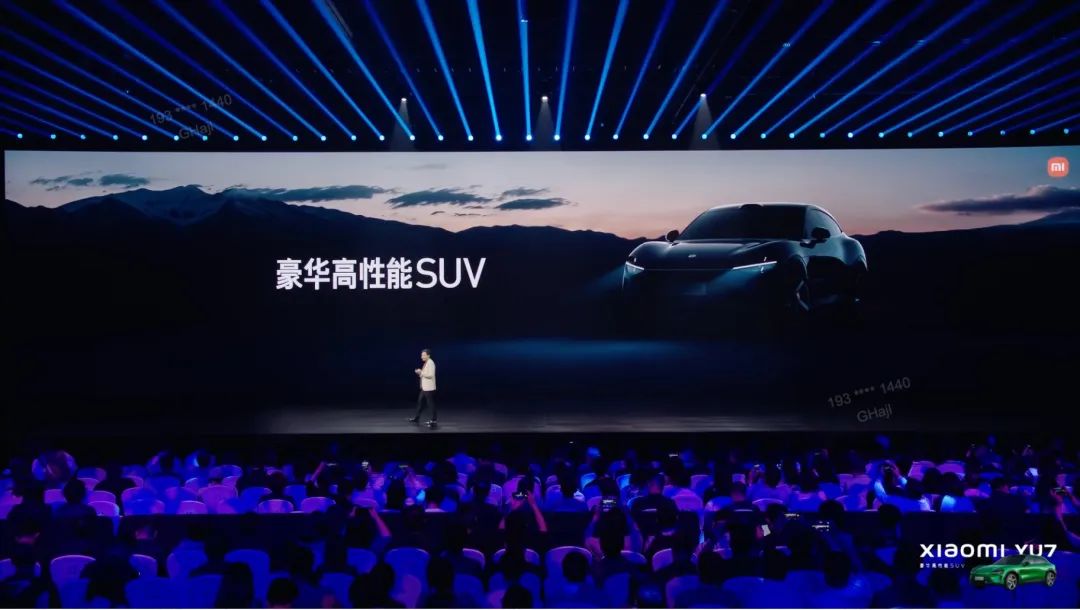
(2) Model Overview: With a length of 5 meters, a wheelbase of 3 meters, and a width of 2 meters, it belongs to a mid-to-large SUV, featuring a three-fold wheelbase ratio, 2.1-fold wheel height ratio, 1.25-fold width-to-height ratio, and 1.3-fold wheelbase ratio. It can be equipped with optional 275mm wide rear tires.
(3) Interior: The interactive system adds Xiaomi Sky Screen panoramic display and rear control screen, with three mini LED screens that project through panoramic curved projection technology onto the black area under the front windshield, forming a 1.1-meter ultra-wide display; the headroom for a 1.88-meter dummy in the front row is 100mm; the headroom and knee room for a 1.88-meter dummy in the rear row are 77mm and 73mm, respectively; it is equipped with zero-gravity seats, both for the driver and passenger, with a 12-layer structure that is thicker, softer, and more supportive, complete with a ten-point massage function; the seats can be sat on or reclined, with electric stepless adjustment within a 35-degree range; the interior is available in three colors: light gray, star white, and twilight blue.
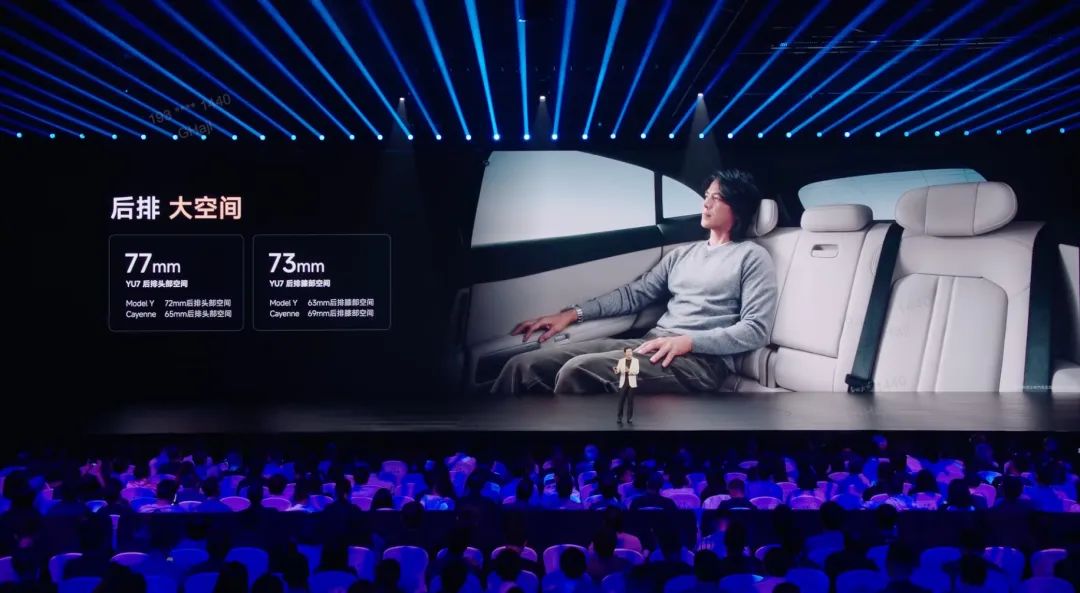
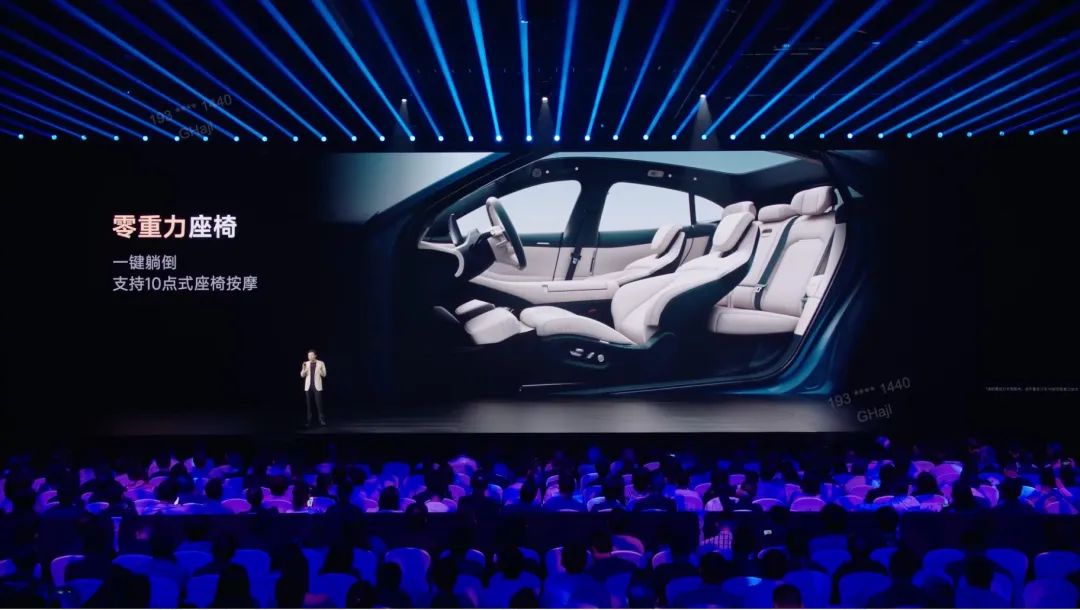
(4) Storage: The clamshell front hood has an area of 3.1 square meters, a 141-liter front trunk, and an overall storage volume of 1970 liters.
(5) Performance: 0-100km/h acceleration in 3.23 seconds, a maximum horsepower of 690, and a top speed of 253 km/h; equipped with Xiaomi's Super Motor V6S Plus, with a speed increase to 22,000 rpm and upgraded torque and power; available in three versions: single-motor rear-wheel drive, dual-motor four-wheel drive, and high-performance four-wheel drive; all versions are equipped with fixed calipers and a four-redundancy brake safety system; the chassis is standard with continuously variable damping shock absorbers; the entire vehicle is standard with continuously variable damping shock absorbers that can adapt to complex working conditions according to road conditions; the closed dual-chamber air spring has five-level height adjustment with a maximum adjustment range of 75mm, a maximum ground clearance of 222mm, allowing rapid adjustment of the vehicle height with a height difference exceeding 40%; the shortest braking distance from 100 km/h to 0 is 33.9 meters.
(6) Range and Charging: All versions offer long range and an 800V silicon carbide high-voltage platform. The standard version has a range of 835 kilometers, ranking first among mid-to-large pure electric SUVs, paired with a 96.3kWh battery; the four-wheel drive pure electric version has a range of 770 kilometers, ranking first among four-wheel drive pure electric SUVs; the max version can be charged for 15 minutes to provide a maximum range of 620 kilometers. It boasts fast charging efficiency, compared to Model Y and Zeekr, where Model Y needs 27 minutes to charge from 10% to 80%, Zeekr needs 21 minutes, and Xiaomi SU7 only needs 12 minutes.

(7) Innovative Technologies
a) Armored Cage Body: Adopting the Model 3 technical architecture with enhancements, the long nose energy absorption space reaches 659mm, 100mm more than Model Y; the bottom adds a 1500 MPa crossbeam, and the bottom of the battery pack uses the same bulletproof coating as Ultra; uses Xiaomi's ultra-strong steel of 2200 MPa for the four-door anti-collision beams, with the front door load-bearing capacity increased by 50% and the rear door by 37%; the A-pillar and B-pillar use six 2200 MPa hot-formed steel tubes to form an embedded roll cage structure, with the A-pillar load-bearing capacity increased by 35% and the B-pillar by 70.5%; the proportion of high-strength steel and aluminum alloy reaches 90.2%, and the body torsional stiffness exceeds 47,000 Nm/degree, with full-scene passive safety performance tests covering all collision tests of C-NCAP and China Insurance Research Institute.
b) Electronic and Electrical Architecture: Self-developed four-in-one controller, highly integrating the four boxes of the auxiliary driving domain, smart cockpit domain, vehicle control domain, and communication module, reducing volume and weight, improving energy efficiency and communication performance, and reducing the number of controllers, such as reducing the power consumption of the sentinel mode by 40%; the cockpit SOC uses the third-generation Qualcomm Snapdragon 8 mobile platform, with fast boot times for the vehicle infotainment system, cold starts, and OTA updates, which can be completed in as fast as 15 minutes; the auxiliary driving module is equipped with the NVIDIA Orin platform with 700TOPS of computing power, as well as dual 5G parallel communication networks, UWB short-range communication, WiFi 7, and other communication technologies.
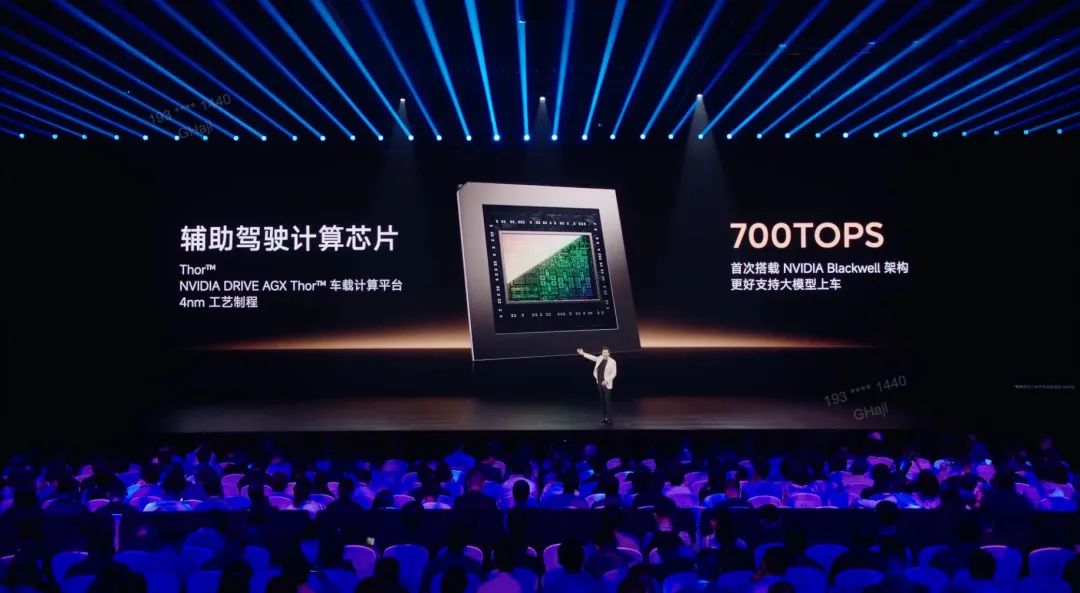
c) Xiaomi Auxiliary Driving: The LiDAR has a detection range of 200 meters, the resolution and recognition distance of the 4D millimeter-wave radar are improved, and the camera applies mobile phone camera technology for ALD coating, resulting in clearer image quality; it is standard across the entire series, with the entry-level version having high-end configurations.

(8) Xiaomi YU7 vs Model Y
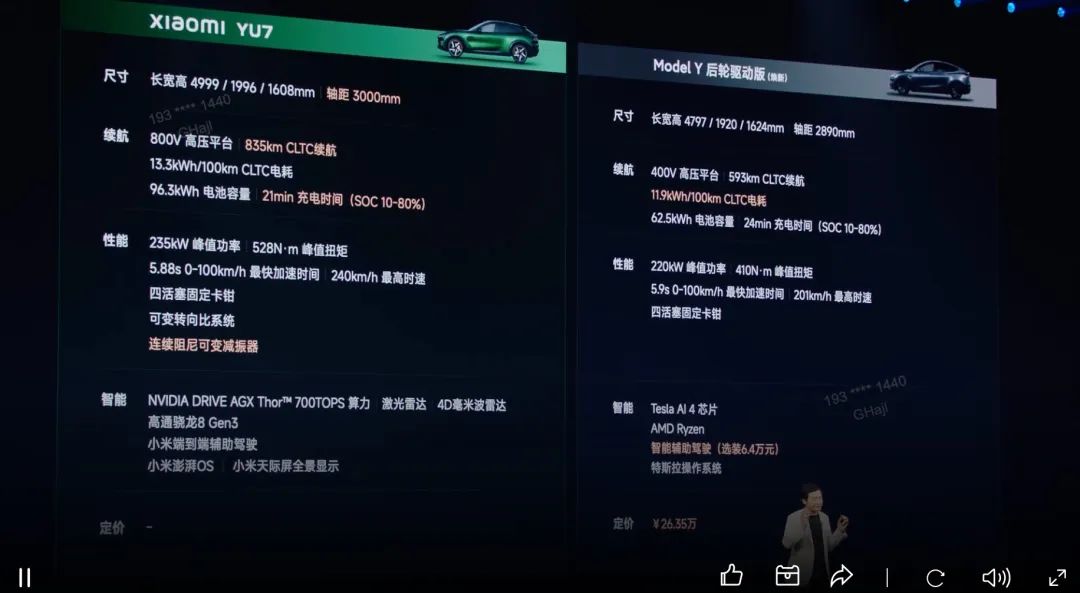
2.
Xiaomi's maiden voyage into self-developed flagship SOC territory has yielded impressive results, scoring a remarkable 3 million points in lab tests, firmly positioning it among the elite in terms of performance. Packed into a compact 109mm² chip area—the same size as Apple's latest processor—it boasts an astonishing 19 billion transistors, leveraging the world's most advanced second-generation 3nm process technology. The CPU adopts a sophisticated ten-core, four-cluster design, delivering a single-core score exceeding 3000 points and a multi-core score of 9500 points, surpassing Apple's A18. While there is still a narrow gap in energy consumption compared to Apple, it is closing fast. The GPU, meanwhile, offers both robust performance and high efficiency, achieving 330 frames on Manhattan 3.1 and 110 frames on Aztec Ruins, outpacing Apple while reducing power consumption by a significant 35%. It also features dynamic performance scheduling technology.
3. Xiaomi 15S Pro
(1) Introducing the Xiaomi 15S Pro, the pioneering device to be equipped with the "Xuanjie O1" 3nm flagship processor, exclusively designed to commemorate Xiaomi's 15th anniversary. It boasts full-focal-length 4K night video capabilities and supports UWB ultra-wideband interconnection. Additionally, it features a 2K Super Sunlight Screen and a high-capacity 6100mAh Xiaomi Jinshajiang battery.
(2) Performance: During intense gaming sessions, the Xiaomi 15S Pro operates at full-core, full-speed. During lighter loads, it intelligently shuts down some cores, entering hibernation immediately after frame rendering. The GPU completely powers down when not in use, resulting in refined power consumption optimization. Actual tests reveal a 30% increase in daily application startup speed and an 8% boost in continuous startup efficiency. For gaming, it maintains stable frame rates of 120 frames per second for an hour, outperforming the iPhone with higher frame rates (+1.5 frames) and lower temperatures (-3°C or more). In a 35°C high-temperature environment, the frame rate advantage expands to +6.3 frames, with heat dissipation performance improved by 30%.
(3) Imaging Capabilities: The Xiaomi 15S Pro is equipped with three 50-megapixel Leica optical full-focal-length high-speed lenses. Its ISP utilizes Xiaomi's self-developed fourth-generation image processor, capable of processing up to 8.7 billion pixels per second, ensuring rapid processing speeds and exceptional image quality. It realizes real-time multi-frame HDR fusion and AI intelligent noise reduction, supports full-focal-length 4K night video, and also integrates UWB ultra-wideband interconnection technology, which can be utilized for contactless payment in rail transit and automatic unlocking and trunk control of vehicles.
(4) Pricing: The Xiaomi 15S Pro is priced at 5499 yuan for the 16GB + 512GB variant and 5999 yuan for the 16GB + 1TB variant. It also comes with a 1366 yuan premium service entitlement and eligibility for national subsidies.
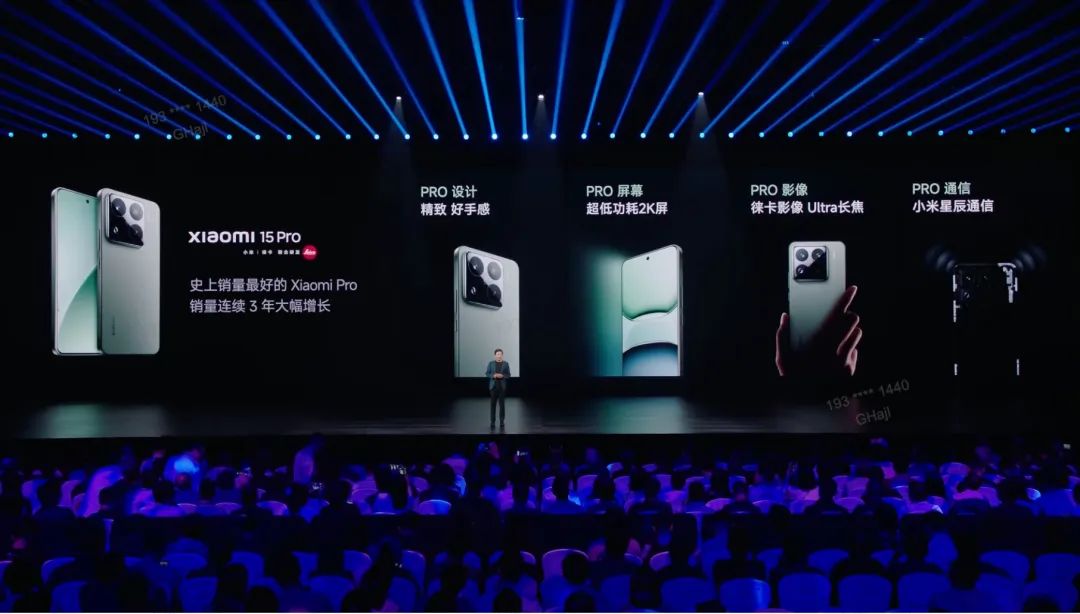
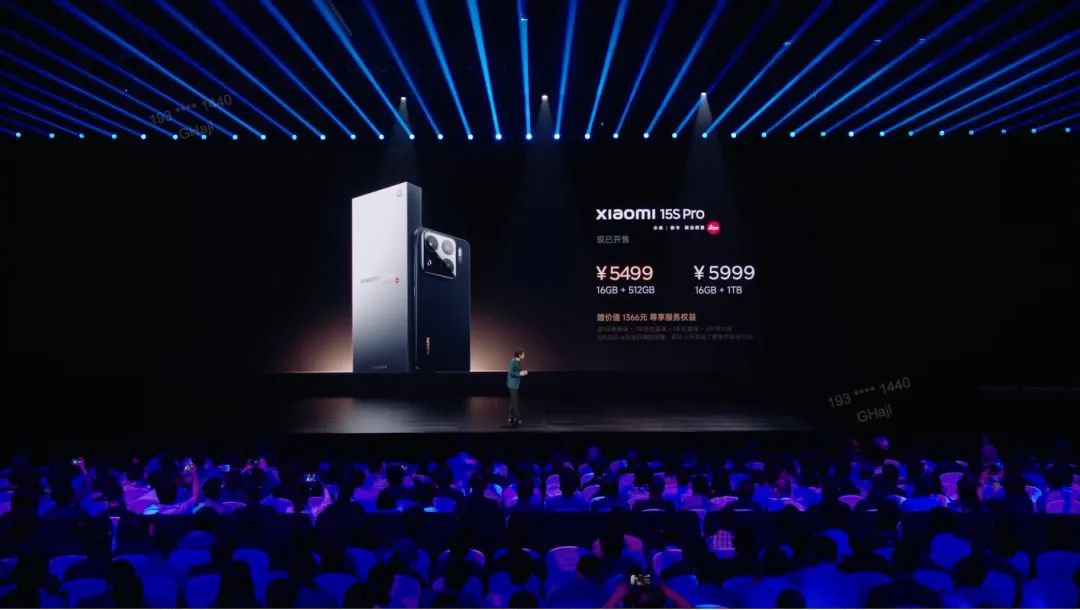
4. Xiaomi Tablet 7 Ultra
(1) Screen: The Xiaomi Tablet 7 Ultra boasts a massive 14-inch screen, the largest ever on a Xiaomi tablet. It employs an OLED panel with an ultra-narrow bezel of just 3.95mm, offering a crisp 3.2K resolution and a smooth 120Hz adaptive high refresh rate. With a peak brightness of 1600 nits and the adoption of M9 low-power luminescent materials, it also comes in a Nano Soft Light Screen version that minimizes light reflection and enhances screen luminosity uniformity.
(2) Audio: The tablet is equipped with symmetrical stereo speakers housed in a large 16.5CC sound chamber, driven by four high-power amplifiers for an immersive audio experience.
(3) Weight and Performance: Despite its impressive features, the Xiaomi Tablet 7 Ultra remains lightweight at just 609 grams and slim at 5.1mm. It is powered by the cutting-edge 3nm flagship chip Xuanjie O1 and comes with a 12000mAh battery that supports 120W fast charging.
(4) Office: The tablet comes bundled with a newly designed floating keyboard featuring a 1.3mm keystroke and a full-area pressure-sensitive touchpad. It enables remote PC control and can serve as a secondary PC screen. Additional features include front-facing camera auto portrait centering, a 4-microphone array, and support for file transfer with Apple ecosystems.
(5) Pricing: The Xiaomi Tablet 7 Ultra starts at 5699 yuan, with the Nano Soft Light version priced slightly higher. The floating keyboard is priced at 1399 yuan, and the stylus at 399 yuan. Purchasing all three items together comes with a discount, bringing the total to less than 7000 yuan.
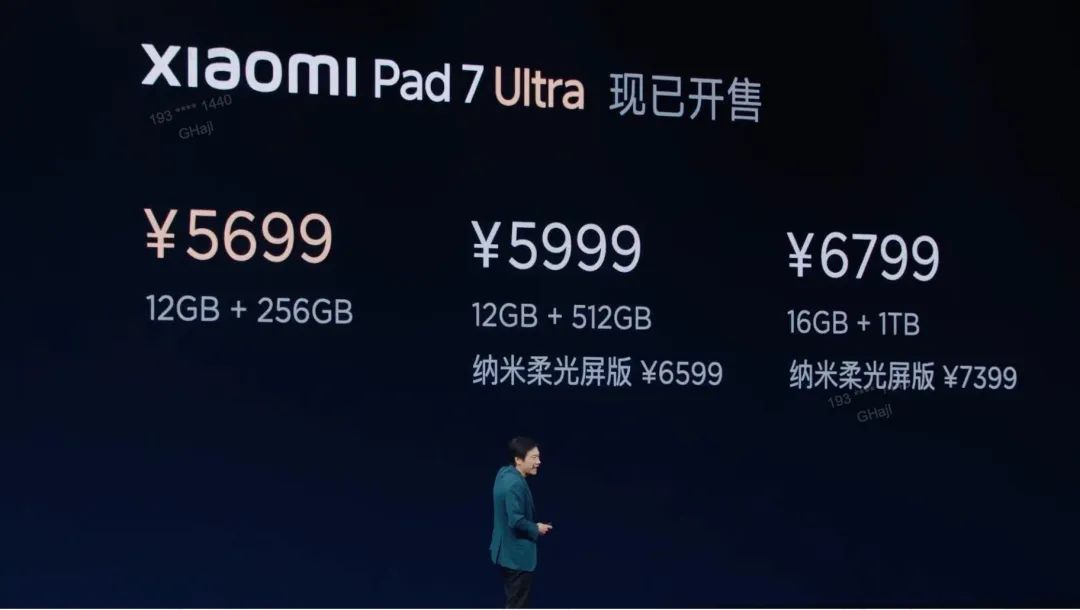

5. Xiaomi Watch S4 Pro
Equipped with Xiaomi's self-developed Xuanjie T1 4G baseband chip, the Xiaomi Watch S4 Pro supports eSIM independent communication, boasting a fully independently designed cellular communication system. It has undergone rigorous testing in over 100 city base stations, covering a total mileage exceeding 150,000 kilometers. Offering robust battery life of up to 9 days in 4G scenarios, it can install the Xiaomi Car APP and remotely unlock vehicles via eSIM. Priced at 1299 yuan, it represents a significant advancement in wearable technology.
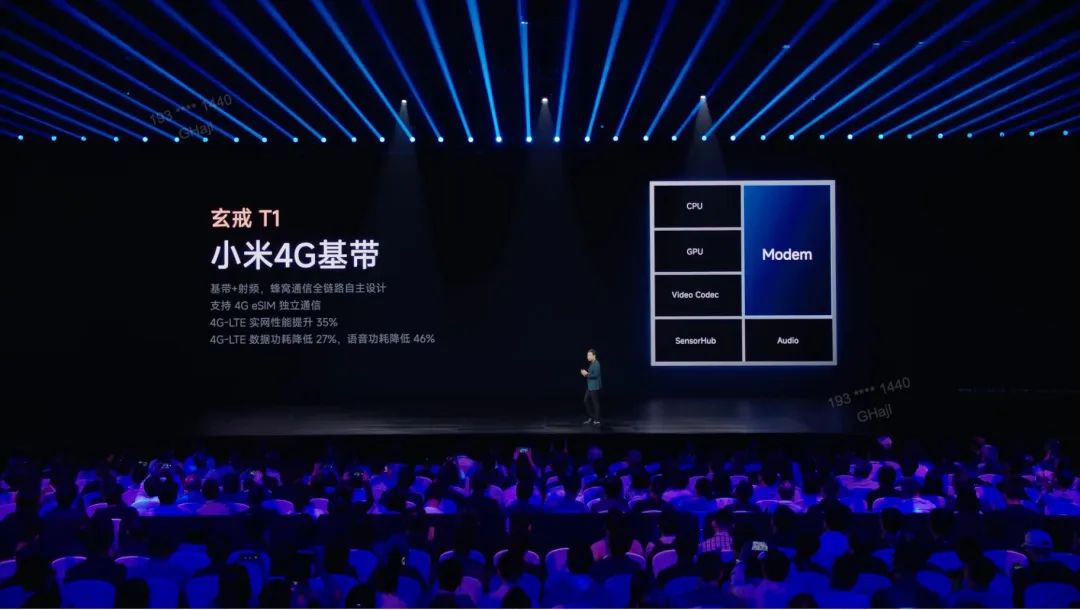
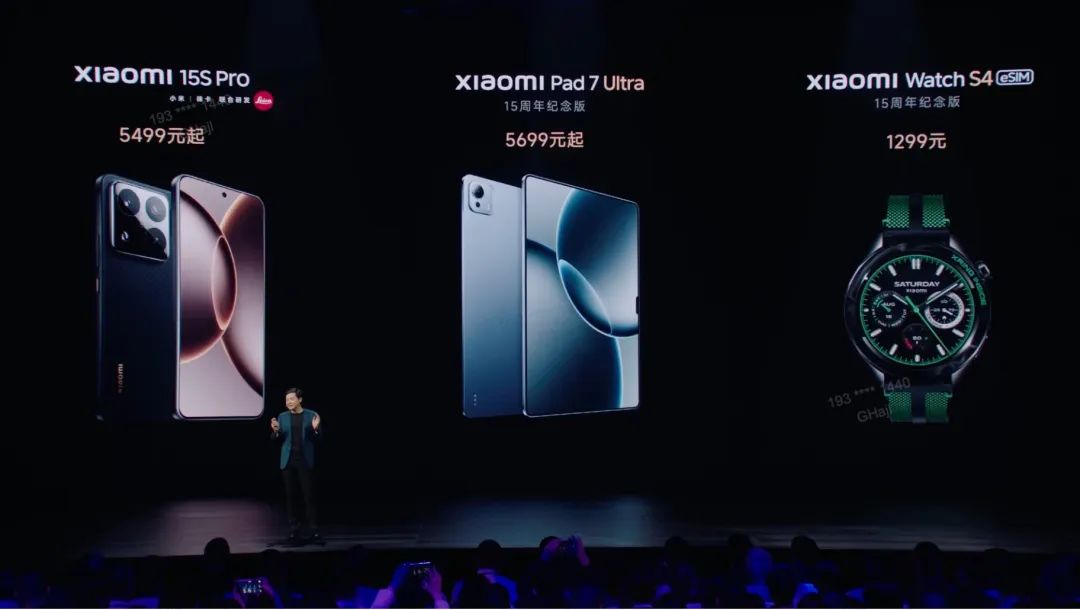
6. Xiaomi Home Appliances
(1) Mijia Air Conditioner Series: Equipped with a human-sensing intelligent system utilizing two millimeter-wave radars to detect human activity, these air conditioners offer intelligent air delivery modes such as blowing towards humans, avoiding humans, and gentle wind when people are still. The wall-mounted model is priced at 3999 yuan, and the cabinet model at 8999 yuan, both supporting national subsidies.
(2) Mijia Refrigerator French-style Flush-mounted Dual System: Featuring a sleek French drawer design with 65cm wide drawers, a 40cm ultra-long stroke, and a spacious 508-liter capacity, this refrigerator offers ultra-thin flush mounting and dual-system cooling. Priced at 4999 yuan for the international version and 3999 yuan for the Chinese version, it comes with a glass panel available in two colors.
(3) Washing Machine Pro Version: This innovative washing machine achieves dual drums with drying functions within the footprint of a standard washing machine. The large drum offers garment-level healthy washing, while the small drum is dedicated to intimate apparel. The large drum is equipped with nano fabric care technology for clean washing. Priced at 5499 yuan, the washing and drying set is available for 8999 yuan.
(4) Mijia Water Purifier: As the only product in the industry with a dual tap and dual water line design, it separately purifies drinking water and domestic water. The RO reverse osmosis filter has a long lifespan of six years and delivers a large water flow of 1600 gallons. The domestic water PP cotton filter needs to be replaced every 1.5 years, offering fast water output with a full cup in just 5 seconds. Priced at 2999 yuan, it has a launch price of 2399 yuan.
(5) Xiaomi TV: The high-end series adopts mini LED technology, providing display effects comparable to OLED at a lower cost. With a 30% increase in zones compared to the previous generation, it offers exquisite image quality. It features a low-reflection screen with a reflectivity of just 1.8%, priced at 2999 yuan for the 55-inch model. The 85-inch model is designed to fit into 99% of elevators, and the 98-inch model with 1092 zones is priced at less than 10,000 yuan.
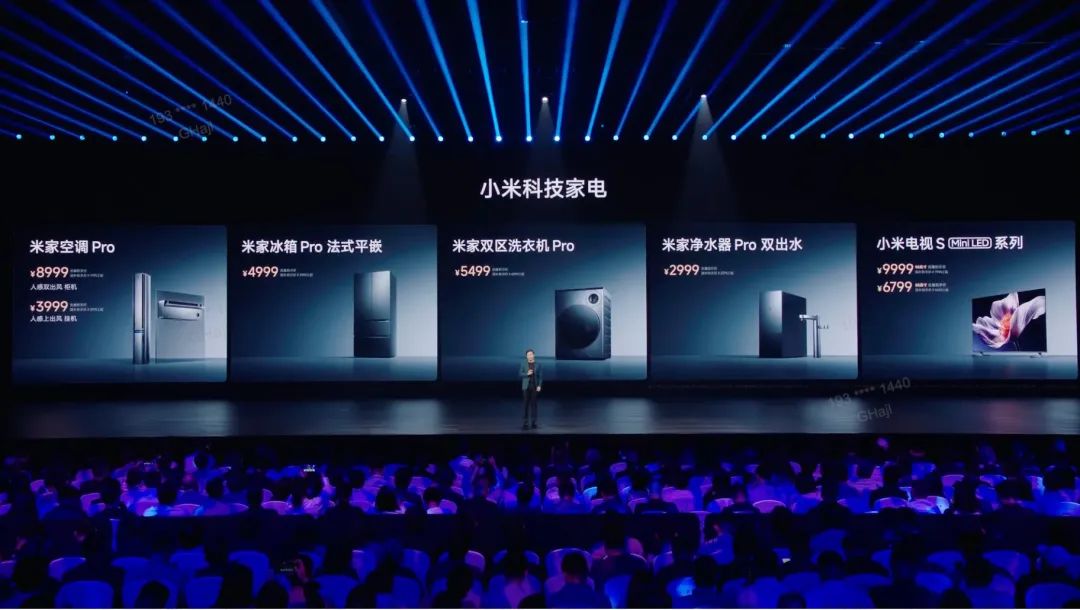
7. Xiaomi Civi5 Pro
(1) Repositioned as an all-rounder lightweight flagship, the Xiaomi Civi5 Pro features an equal-depth micro-curved screen measuring 6.55 inches with a slim chin of just 1.6mm, offering an immersive viewing experience.
(2) Imaging Capabilities: Inheriting Xiaomi's flagship Leica imaging system, the Civi5 Pro is equipped with three Leica optical high-speed lenses, including the same floating telephoto lens as the Xiaomi 15, realizing full-focal-length imaging capabilities. The front camera boasts a 50-megapixel ultra-sensitive sensor with ultra-transparent nano-prism technology, enhancing light sensitivity by 20%. It also inherits Night Owl imaging technology and offers a comprehensive upgrade to Live Photo.
(3) Performance and Battery Life: Powered by the fourth-generation Snapdragon 8S, the Civi5 Pro delivers more stable gaming frame rates and lower temperatures. The battery is a substantial 6000mAh Jinshajiang battery, an increase of 1300mAh compared to its predecessor.
(4) Pricing: The Xiaomi Civi5 Pro starts at 2999 yuan.
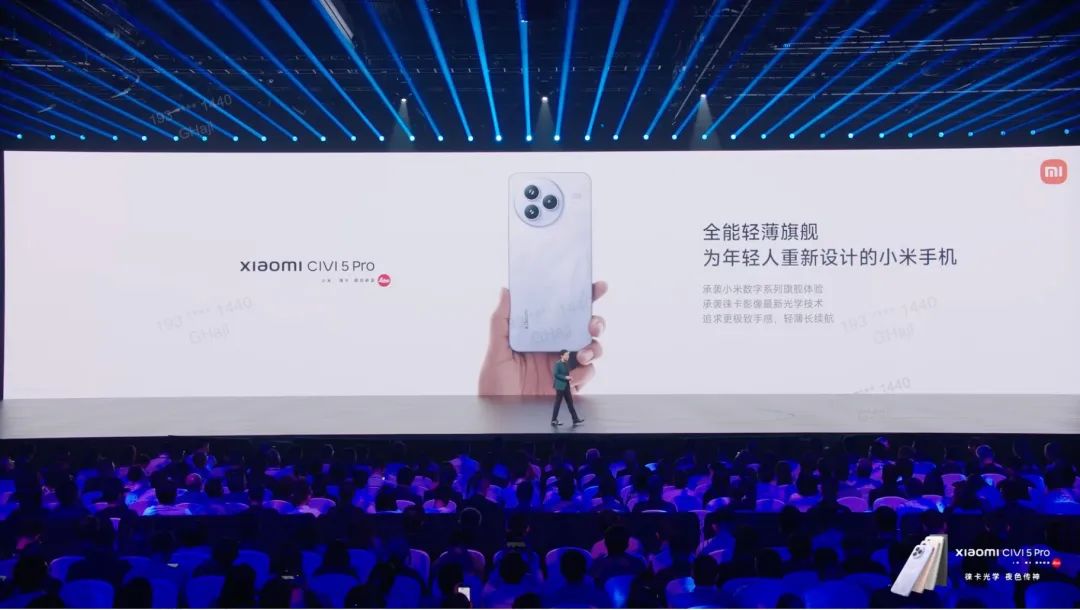
- END -
// Reprint Authorization This article is an original creation of Dolphin Investment Research. For reprinting, please obtain authorization.
// Disclaimer and General Disclosure Notice This report is intended for general comprehensive data use only, designed for general browsing and data reference by users of Dolphin Investment Research and its affiliated institutions. It does not consider the specific investment objectives, investment product preferences, risk tolerance, financial situation, or special needs of any individual receiving this report. Investors must consult with independent professional advisors before making investment decisions based on this report. Any person who makes investment decisions using or referencing the content or information mentioned in this report does so at their own risk. Dolphin Investment Research shall not be liable for any direct or indirect responsibility or loss that may arise from the use of the data contained in this report. The information and data contained in this report are based on publicly available information and are for reference purposes only. Dolphin Investment Research strives to ensure but does not guarantee the reliability, accuracy, and completeness of the relevant information and data. The information or opinions expressed in this report may not be construed or deemed as an offer to sell securities or an invitation to buy or sell securities in any jurisdiction, nor do they constitute advice, inquiries, or recommendations regarding relevant securities or related financial instruments. The information, tools, and materials contained in this report are not intended for or to be distributed to citizens or residents of jurisdictions where the distribution, publication, provision, or use of such information, tools, and materials would violate applicable laws or regulations or result in Dolphin Investment Research and/or its subsidiaries or affiliated companies needing to comply with any registration or licensing requirements of that jurisdiction. This report only reflects the personal views, opinions, and analysis methods of the relevant creative personnel and does not represent the position of Dolphin Investment Research and/or its affiliated institutions. This report is produced by Dolphin Investment Research and its copyright belongs solely to Dolphin Investment Research. Without the prior written consent of Dolphin Investment Research, no institution or individual may (i) produce, copy, reproduce, replicate, forward, or create any form of copies or reproductions in any way, and/or (ii) directly or indirectly redistribute or transfer them to other unauthorized persons. Dolphin Investment Research reserves all related rights.








